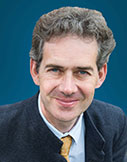Outgoing President Serzh Sargsyan is likely to remain Armenia’s de facto leader when constitutional changes soon kick in. Sargsyan has diversified Armenia’s economy and foreign policy. Will he continue that trend?
Armenia is entering a moment of transition, which is also a kind of experiment. On April 9, constitutional reforms will change the way Armenia is governed. The second and final presidential term of Serzh Sargsyan will end; he will resign as president and head of state, along with the current government. Armenia’s former ambassador to Great Britain, Armen Sarkissian, will become president but that position will be much more of a ceremonial post.
A week later, Armenia will get a new prime minister, chosen by parliament, who will be the de facto leader of the country—in charge of the economy and foreign and security policy. Armenia has been called a “one-and-a-half party state,” dominated by the ruling Republican Party, with only a weak opposition. So Serzh Sargsyan has that job for the taking, if he wants it. Sargsyan had earlier denied that he wanted to become prime minister, but all the indications are that he will.
So in many ways, nothing will change. Indeed, the presidential administration building where Sargsyan works will become the prime minister’s office, with merely a different nameplate on the door. (Confusingly, both outgoing and incoming presidents bear the same surname but are not related and choose to spell it differently in English).
Obviously, this is a mechanism that allows Armenia’s current ruling elite to stay in charge. It’s a familiar tactic in the post-Soviet space, where leaders endlessly tinker with their constitutions to perpetuate their power.
Vladimir Putin made a similar gambit when his second term ended in 2008, even though in the Russian case there was no new division of powers. Former Georgian president Mikheil Saakashvili changed his country’s constitution to empower the prime minister’s office vis-à-vis the president but did not survive to benefit from the move, as he was voted out of office.
Meanwhile, Azerbaijani President Ilham Aliev looks set to preempt Sargsyan by just a few days, having called an early presidential election for April 11 in which he will be reelected by a landslide. Aliev, president since 2003, has already twice amended Azerbaijan’s constitution: first to get rid of term limits, then to extend the presidential term to seven years instead of five.
So far, so depressing. Sargsyan has been in power since 2008, and it is unfortunate when a country cannot choose a new leader after all this time.
Yet, objectively speaking, the new configuration and its division of powers could work better for Armenia than the old one. Visiting Armenia last month, I found the mood more positive than I had expected.
Four years ago, Armenia was definitely in the doldrums. The economy had barely recovered from the big losses it suffered as a result of the global economic downturn of 2009. Under pressure from Moscow, Sargsyan had backed away from concluding an Association Agreement with the EU and instead signed up to Russia’s Eurasian Economic Union, despite its dubious economic benefits.
But Sargsyan is a shrewd politician who plays the long game. Since then, he has worked hard to achieve a more balanced foreign policy. Although Russia remains the chief partner, Armenia has salvaged many of the political aspects of its deal with Brussels and signed a new Comprehensive and Enhanced Partnership Agreement with the EU last year. That promises EU support in creating a better investment climate, supporting civil society, and enhancing environmental protection for Armenia. (Belarussian officials have dropped hints that they are interested in something similar).
The government is also looking to Asia and has secured investment from the Asian Development Bank for the country’s new North-South Road. It has found ways to work better with leading diaspora figures. Several, such as the former head of Troika Dialog Bank, Ruben Vardanian, are investing in education or the IT sector.
The top officials are a much more impressive bunch than before. In 2016, Sargsyan got rid of the deeply unpopular Hovik Abrahamian and appointed a more dynamic prime minister, Karen Karapetian, who has secured higher levels of foreign investment and economic growth, which was 7.5 percent last year. He also appointed Vigen Sargsyan (no relation), a professional, U.S.-educated, 42-year-old presidential aide to be a civilian defense minister. A key part of his brief is to tackle corruption, which many Armenians blame for losses in the fighting with Azerbaijanis in April 2016. The urbane new president, Armen Sarkissian, is a good choice, being one of Armenia’s best-known international figures, variously an academic, diplomat, and businessman.
In other words, Serzh Sargsyan has methodically put in place pieces of a puzzle that can push Armenia forward. The key question of course is, will they?
The underlying problems remain huge. The parliament, rendered more powerful by the constitutional changes, remains a nexus of business and politics that breeds corruption. Emigration rates remain high. Moreover, the fundamental problem of the unresolved Karabakh conflict and the closed borders with Azerbaijan and Turkey hangs over the country.
Some pro-government Armenians cite the volatility of the Karabakh conflict as one reason why the country needs Sargsyan to continue, as a steady head on the tiller. One suggested to me that Sargsyan may have genuinely wanted to step aside but did not see anyone who could replace him. Another said that it would not be destabilizing if Armenia’s de jure leader was not its de facto leader (taking, perhaps, a sideways look at Georgia and the role of former prime minister Bidzina Ivanishvili).
If this positive spin is borne out and prime minister Sargsyan really wants a better-functioning and more open Armenia, then we should be watching closely whom he appoints to key government posts. In other words, is Sargsyan thinking about an exit strategy or is he just happy to see more of the same?
https://carnegieeurope.eu/strategiceurope/75988














